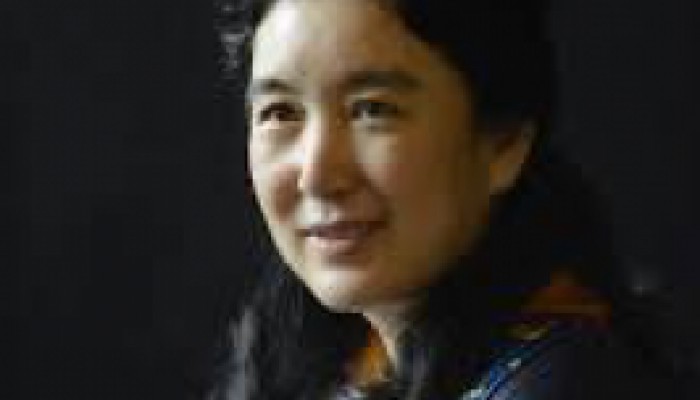
Living Together in Diversity: Matrilineal Models from India
- 2019-May-22
The matrilineal system of inheritance is a special feature of Muslims society living in Indian Ocean coastal line, where the audacity and heroism of women were outwardly visible in the public and socially acclaimed. The system emerged and developed among the Muslim communities out of the incorporation of the local ethos to Islamic culture. This was flourished and supported by the regional families as part of their family traditions. Though the family accepted Islam they were not changing their usual family customs. Women got prominence in the Matrilineal family and higher female authority of the matrilineal society is source of power and actively executes the economic , social and even rituals at the ancestral home.
Matrilineal Ceremonies
Matrilineal system was accepting the unique nature of living together in diversity without discriminations in the family and social customs. The number of wedding rituals were unique and colourful for their special forms derived from the assimilation of various cultures. Matrilineal community celebrated marriages as special festivals with family and friends. People helped each other to make the event much colorful and effective with all kinds of support. The singers and traditional dancers took the privilege of enjoying the moment of being part of the cultural festival. People helped each other to make the event colorful and emotionally effective without expecting any remuneration or payment. The singers and traditional dancers enjoyed the privilege of being part of the cultural festival. There were special groups to sing songs composed specifically for each marriage, including the names of the bride, bridegroom, and both families. The groups coming from the bride’s house and from the house of the bridegroom’s house competed in the songs. Some instant poets and singers on the spur of the moment invented lines and counter lines to beat the other group. The Marriage was the regional festival of the village, so everyone contributed to the event by working hard to make it successful.
Tradition of Matrilineal Houses
The cultural assimilation was also reflected in the style of the Matrilineal houses, which adopted conventional architecture to suit the climate, available building materials and the craftsmanship of time-honored builders. Muslims and non-Muslims built the same type of houses considering their financial status. The traditional Muslim Tharawad was just a replica of Hindu houses and they were all built following traditional vastu. Almost all rooms in both Hindu and Muslim houses were denoted by the same name in various areas. Muslim houses had special place for ritualistic purpose whereas Hindu houses had Pooja room. Muslim ancestral house kept two built-in platforms on both sides to the entrance in the open area, special place for performing traditional ritual arts like Ratib or Mawlid.
These big houses were normally two stories and wooden staircase to the second floor was placed in this area. It was an important part when the house kept the tradition of matrilineal pattern, in which the rooms of husbands who married from the house were arranged. This is traditionally called Arra, private bed come leisure place of visiting husbands. All other people living in the house gave much respect and concern to this person who however long stays , considered as the respectful guest of the family. The Central courtyard area was in the centre of the house where normally a square opening on the roof provides much freedom to enjoy the natural wind inside the house. This system kept the house cool and naturally abides to the special climatic seasons of Malabar. This was really a blind adaptation of the traditional non-Muslims houses to the Muslim life styles, integrating some Islamic flavours, but most of them were derived from the cross cultural relation. If it is small it was called Naduvakam, where the open sky was visible and inhabitants enjoyed better ventilation. It was a building structure which helped the people to live with nature and weather conditions.
Assimilations in Marriage Ceremonies
In the marriage ceremonies also the cultural assimilation is widely reflected. Nikah is the important and peculiar religious ceremony in a Muslim marriage. But in traditional practice of Malabar, consummation of marriage can take place only after holding a function called kalyanam. In some cases nikah will be solemnized months or years ahead of real traditional kalyanam. In another tradition nikah could be performed on the day of kalyanam, when the bridegroom and his friends visit the house of the bride. According to the usual practice of the matrilineal system, nikah is normally solemnized in the bride’s house or in the mosque near the house. The activities other than nikah were almost the same in both kalyanam of Muslims and Hindus. Resembling the Hindu system of Thali Charthal, the Muslim bridegroom also ties the mahar on the neck of the bride when he first visits her. In traditional style both for Muslim and Hindu marriages are arranged and traditional marriage brokers or family friends or elders of the family help to find matching spouses. The elder male members meet to declare the proposal and fix a date for marriage, which is officially called Nischayam. In both systems the decoration of maniyara is taken as a matter of prestige and in matrilineal style, which they spend a lot on to arrange a special room for the bride groom in bride’s house and try to make it as posh as possible. In this special case, the bride’s family will be very cautious in arranging the maniyara, suitable enough to satisfy the status of both families. There is a tradition of seeing the maniyara before the marriage party, in which relatives and friends prefer to visit maniyara. Now the maniyara is called Ara as the shortened version of the word.
The Matrilineal Traditions in Burial Places
Even
in Matrilineal lineage, Muslim women
also emerged to religious higher position like Qadi, who
used to fix the date of Eid,
Ramdan etc. Muslim families from the
prophetic traditions, who settled here
for centuries used to follow the matrilineal traditions
in their designated holy burial places.
Jifri House of Kozhikode is an identical model for this practice providing nearest space to daughter
and son in law in the holy shrine of
Shiekh Jifri without considering the direct sons as even after their death. Cultural
assimilations were promoted than monotonously accepting the one tradition,
which avoided alienation and helped to flourish
unity in diversity.






